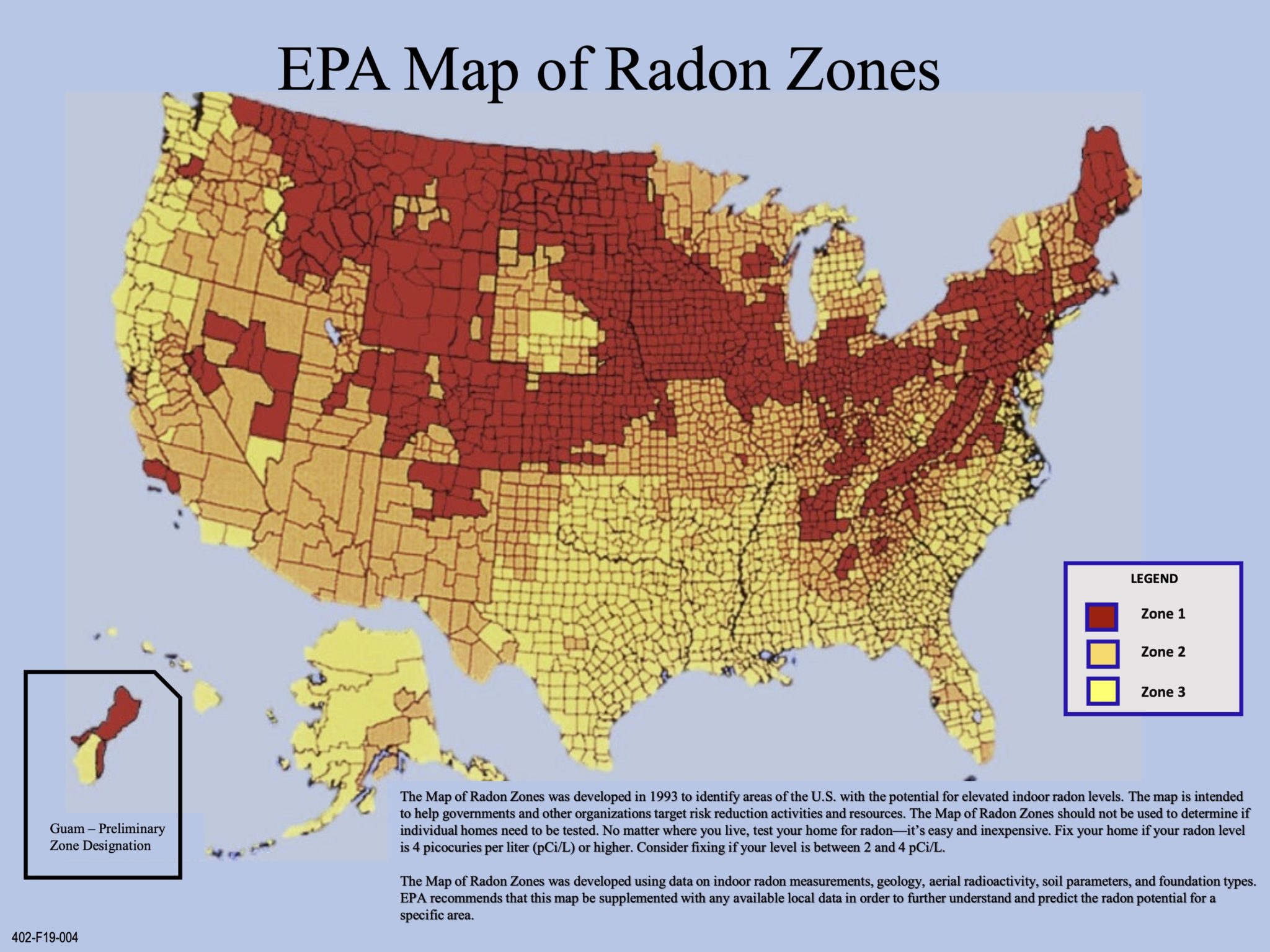All homes could benefit from having a radon-reduction system. However, it is especially cost-effective to install the features in homes with the greatest potential for high radon levels.
The potential for elevated radon levels is not uniform throughout the U.S. The EPA and the U.S. Geological Survey have identified areas of the country with the greatest potential for high radon levels. The map to follow is based on indoor radon measurements, local geology, and population densities compiled in an effort to rank radon potentials in all counties across the U.S. The map indicates three radon-potential zones defined by the likelihood of finding radon measurements within certain ranges when a short-term closed-building radon test is performed.
The EPA recommends that all homes built in Zone 1 areas (with high radon potential) install radon- reduction systems. The NAHB also recommends using the passive system in homes in high radon potential areas (Zone 1). Zone 1 counties are listed by state.
If you are building in a Zone 2 or 3 area, the homes you build could still have high radon levels, particularly if there is a radon “hot spot” in your county. According to an annual survey by the NAHB Research Center, about 60,000 homes in Zones 2 and 3 are built with radon-resistant techniques each year. You may want to consider applying the techniques in these areas, too. Since the map was developed, many states have acquired additional information on high radon areas. Contact your state radon office for more information.
Consumers have asked for the radon-reduction features in many different parts of the country and in all three radon zones.


